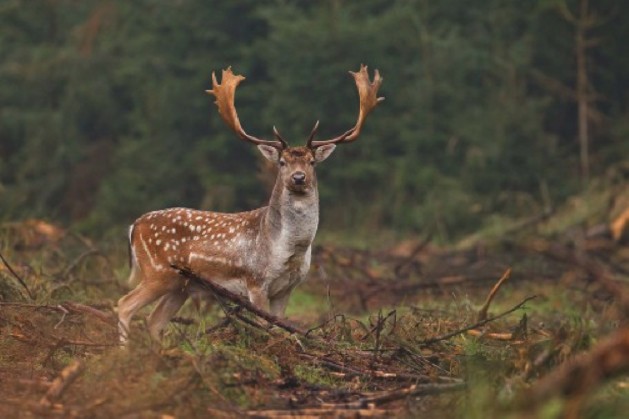
Academics in Tasmania have warned that fallow deer populations have been significantly underestimated and estimatethat populations could reach 1 million by 2050.
Professor Ted Lefroy, Director at the Centre of the Environment at the University of Tasmania, believes the state needs a better understanding of the fallow deer population.
The Professor and two colleagues have made a submission to the Upper House inquiry on wild deer. They have urged authorities to devise a better management regime.
The academics believe the population will increase by 40 percent in the next 10 years. Possibly reaching the 1 million mark by 2050.
They have estimated the population covers 30 percent of the state with impact on Wilderness World Heritage areas.
Professor Lefroy said “to properly understand the issue, authorities needed to know exactly how many there were, how fast the population was growing and at what rate they were being hunted.”.
“We have a pretty good figures for the last of those because the game management branch keeps good records of the number of permits they issue,” he told Country Hour.
“The numbers we don’t really know are: how many there are there — we’ve just gone with the current estimate which is somewhere between 20,000 and 40,000 — and the growth rate.
“Based on estimates from overseas studies, the growth rate could be expected to be between 13 per cent up to as high as 60 per cent.

His team has crunched the numbers in a modelling study.
“The main point of the modelling study was to point out there are three vital statistics and we really don’t know two of them,” Professor Lefroy said.
“The question we’re are asking is, ‘is the current regime keeping a lid on population growth rates?’
“What we are saying is the current one limits the number of animals and the class of animals and the time of year they can be taken, so there are three variables and those three variables could be played with.
“At the moment it quite restrictive.”
The Professor believes that the fallow herd can be kept under control with agreement from the government, land holders and hunters.
“I think there is a very good possibility that collectively they could arrive at a target population that could satisfy all three, didn’t do too much damage to environment, or to agriculture, but maintained a population for hunting.
“They are here, I don’t think we are ever going to get rid of them so it’s case of saying how many can we live with.
“At present, what led us to that study is that anecdotally we hearing that they are getting out from under that lid.
“The way it is being done at the moment is by roadside survey and the probably the hardest number we’ve got is the 7,000 from the 1970s … and that was a study done in small part in their traditional range and then it was extrapolated up.”
“Until we have a better idea how to monitor the population density, and the range, we are really guessing.
The Professor throughout the interview gave a pragmatic approach to controlling the fallow herd numbers. He believed hunting played an important part and did not hide from the fact that some real numbers need to be put forward before any accurate estimates could be made.
It is clear that Tasmania’s deer season and current regulations restrict the hunting opportunities. This in itself could be the main contributing factor with the population increase.
This would be a doubt hot topic amongst the Tasmanian deer hunters. Having little experience with the Tasmanian fallow herd it would be interesting to hear the local hunter’s point of view on the current fallow situation.

0 Comments